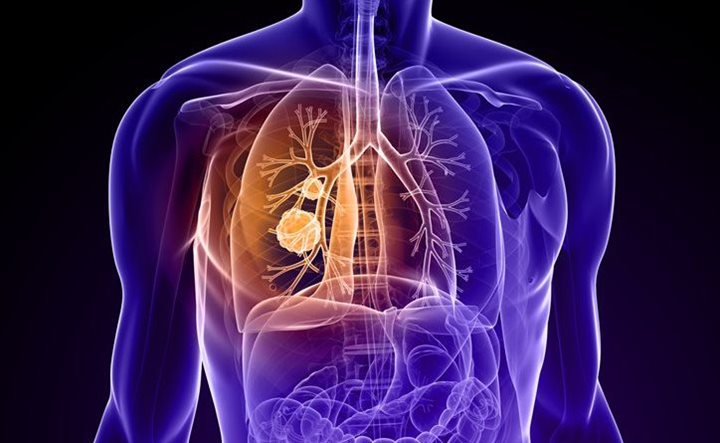Lung cancer is cancer that begins in the lungs. The lungs are located in the chest and are responsible for taking in oxygen and removing carbon dioxide. Unfortunately, when cancer grows in these organs, it is a very serious disease. In fact, lung cancer is the leading cause of death in the United States and takes more lives than other cancers combined. Fortunately, there is a life expectancy for lung cancer and the chance of survival increases significantly with early detection.
Types of Lung Cancer
There are two main types of lung cancer. These lung cancer types are SCLC (small cell lung cancers) and NSCLC (nonsmall cell lung cancers). SCLC account for only 20% of lung cancers. This cancer type is most aggressive and grows very rapidly. It is also likely to spread to other locations in the body. This form of lung cancer is directly related to cigarette smoking. 99% of patients with this type of tumor are smokers. Nonsmall cell lung cancers are more common and are found in 80% of all cases. The three main types of NSCLC include:
- Adenocarcinomas – Begins in the cells that line the alveoli.
- Squamous cell carcinomas – Cells that start in the squamous cells.
- Large cell carcinomas – Cancer cells that begin in the large cells.
Life Expectancy
The life expectancy of lung cancer patients depends on the cancer stage as well as how early it is detected. The five-year survival rate for those with stage 1 lung cancer is 60-80%, although more recent studies show that early detection increases this rate to 90% of more. The survival rate for stage 2 is 40-50%. For stage 3 lung cancer, the life expectancy significantly varies. Variables include type of cancer, age, sex, other medical conditions and responsiveness to treatment. The average life expectancy of someone with stage 3 nonsmall cell cancer, in which 50% have lived, ranges from 13-15 months. The percentage of patients who survive 5 years after diagnosis is 23% for stage 3A and 10%. Sadly, the overall 5-year survival rate for those with stage 4 lung cancer is less than 10% with an average survival time of 8 months.
Overall, lung cancer is a very serious disease that is one of the leading causes of death in the United States. Anyone who experiences symptoms such as an unexplained cough, coughing up blood, changes in a chronic cough or wheezing should schedule an appointment with their doctor. Early detection is the key to surviving lung cancer.
Remember that survival rates are only statistics and they do not always give an accurate estimate of how long any individual will survive with a certain type of cancer. There are always many factors that affect cancer survival rates, including your general health, sex, mindset, race, what treatments are being used, and for people who smoke, whether they are able to quit or not. Survival rates pertain to how many people are still living with a certain disease after a determined amount of time. For example, a 5-year survival rate of 60% means that 60% of people, or 60 out of 100 people, will still be alive after 5 years.
- Small Cell Lung Cancer: The 5-year survival rate for this type of cancer, for both stages, only averages to about 6%.
- Non-Small Cell Lung Cancer: The 5-year survival rate for this type of cancer, with all stages combined, will average to about 15%.
- BAC (Bronchioloalveolar Carcinoma): This form of cancer has a higher survival rate than with other types of lung cancer. BAC rates can increase if it is caught early and only one or two tumors exist. The 5-year survival rate for this form of cancer, in both stages 3 and 4, holds an average of 60%.
The stages of Lung Cancer can also determine the progression of the disease, the survival rate, and what treatments may still be available. The stages are different in each type of cancer and can be determined by a physician.
Small Cell Lung Cancer is divided into two stages: Limited Stage and Extensive Stage
- In limited stage, the 5-year survival rate (both stages of small cell cancer combined) only averages up to 6%, due to the aggression of this form.
- In extensive-stage, the average life expectancy varies with treatment, 2 – 4 months without, and 6 – 12 months with it.
Non-Small Cell Lung Cancer is divided into 4 stages:
- Stage 1: The 5-year survival rate is 60-80%.
- Stage 2: The 5-year survival rate is 40-50%.
- Stage 3A: The 5-year survival rate is 23%.
- Stage 3B: The 5-year survival rate is only 10%. The median survival time with treatment is 13 months.
- Stage 4: The 5-year survival rate is reportedly less than 10%. The median survival time is about 8 months.
Lung cancer is now the leading killer of all types of cancer in both men and women in the United States. Lung cancer is known to cause the highest fatality rate. Colon, breast and prostate cancers combined do not match the number of deaths from lung cancer. Blacks are more likely to contract lung cancer than any other race, and men are at a higher risk than women.
The prognosis of any type of Cancer certainly depends upon the stage and treatments given. Every individual is different and everyone should speak to their medical physician about what their condition is. Have a complete understanding of any treatments that are available, and what the average outcomes of those treatments can be.
Photo: Thinkstock/Eraxion








